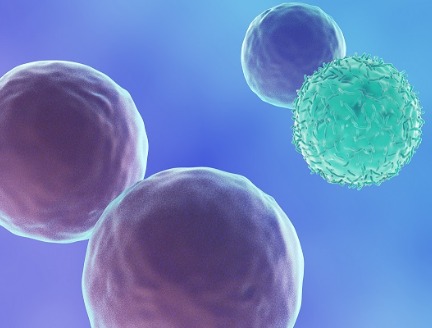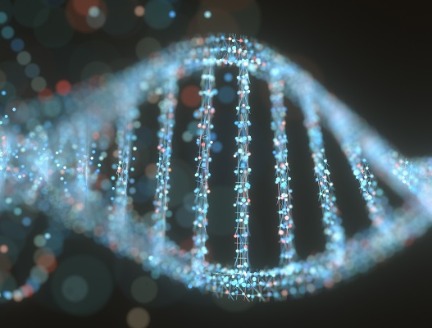



restorative medicine
Deprogramming Transplant Rejection
Deprogramming Transplant Rejection
Houston Methodist researchers identified a troublesome subset—stem-like CD4+ T cells in transplant recipients—that may be a more effective therapeutic target for preventing transplant rejection in patients.
Houston Methodist researchers identified a troublesome subset—stem-like CD4+ T cells in transplant recipients—that may be a more effective therapeutic target for preventing transplant rejection in patients.
Nobel Prize image by Thomas Fisher Rare Book Library, UofT is licensed under CC BY 2.0.
In 1945, a young Army surgeon named Joseph Edward Murray suspected that a soldier’s successful skin graft was due to the impact of the young man’s severe burn injuries on his immune system. He was convinced that regulating the immune response would make organ transplants possible.
Wenhao Chen, PhD
Today, a Houston Methodist team of researchers led by Wenhao Chen, PhD, Associate Professor of Transplant Immunology, has further advanced the field with the identification of a troublesome subset of CD4+ T cells—a subset that may be a more effective therapeutic target for preventing transplant rejection in patients.


Transplant Rejection
Transplanted tissues and organs are recognized as “other” by our immune systems, thus, triggering an immune response that results in physiological rejection of the tissue. To prevent this, physicians must modulate immunity, so the immune response is not clinically significant, and the foreign object is tolerated. Measures can be taken before and after transplant to reduce the risk of rejection.
Before transplantation, testing ensures that donors and recipients have compatible blood types and genetic profiles that are closely matched, with a preference for the better matched donors. After transplantation, anti-rejection medications are prescribed, and blood work is monitored frequently to ensure transplant success and prevent unwanted side effects.
To gain deeper insight into the role of CD4+ T cells in transplant rejection, Chen’s study utilized single-cell RNA sequencing to analyze the CD4+ T cell response in transplantation scenarios. Published recently in Nature Immunology, the results indicate the presence of stem-like CD4+ T cells in transplant recipients, as well as the stem-like program directing the CD4+ T cell response in models of transplantation.
More specifically, they found stem-like CD4+ T cells that recognize transplant antigens and can differentiate into effector cells that attack transplanted organs. Their data indicate that naïve alloantigen-specific CD4+ T cells develop first into TCF1hi effector precursor T (TEP) cells and then into TCF1–CXCR6+ effector cells. However, the effector cells lose their ability to proliferate and fail to reject allografts upon adoptive transfer into new recipients. Conversely, the TCF1hi CD4+ TEP cells can self-renew and differentiate into effector cells, thereby representing the stem-like CD4+ T cells in transplantation scenarios. Crucially, the rejection of allografts is dependent on continuous replenishment of TCF1–CXCR6+ effectors from TCF1hi CD4+ TEP cells. Moreover, the sustainability of the CD4+ TEP cell population is largely dependent on TCF1, while the differentiation into effector cells requires other factors, including the transcription factor IRF4 and the glycolytic enzyme LDHA. In fact, IRF4 or LDHA deletion in T cells resulted in transplant acceptance.
These results provide robust evidence for a stem-like program that controls the self-renewal and effector differentiation abilities of CD4+ TEP cells. Because the stem-like CD4+ T cells continually replenish the effector cell pool, they might be the more effective therapeutic target for preventing transplant rejection and in other T cell-related immunotherapies.
“This revelation about the true ‘troublemaker’ within the CD4+ T cell population is just the tip of the iceberg. I sincerely hope that our findings garner widespread attention, motivating both researchers and patients to recognize the significance of targeting these ‘troublemakers,’” said Chen.

This revelation about the true ‘troublemaker’ within the CD4+ T cell population is just the tip of the iceberg. I sincerely hope that our findings garner widespread attention, motivating both researchers and patients to recognize the significance of targeting these ‘troublemakers.

Wenhao Chen, PhD
Associate Research Professor of Translational Imaging
Stem-like CD4+ T Cells
The molecular pathways leading to T-cell activation have been extensively studied, but the mechanisms modulating subsequent CD4+ T-cell effector programs are not fully understood.
Recent advances in the field include identification of antigen-primed “stem-like” CD4+ T cells” in models of multiple sclerosis and chronic infection. Studies identify stem-like features of these CD4+ T cells, including the capacity for self-renewal and persistence, and the ability to differentiate into effector cells.
Dawei Zou, Zheng Yin, Stephanie G. Yi, Guohua Wang, Yang Guo, Xiang Xiao, Shuang Li, Xiaolong Zhang, Nancy M. Gonzalez, Laurie J. Minze, Lin Wang, Stephen T.C. Wong, A. Osama Gaber, Rafik M. Ghobrial, Xian C. Li, and Wenhao Chen
Heather Lander, PhD
January 2024








